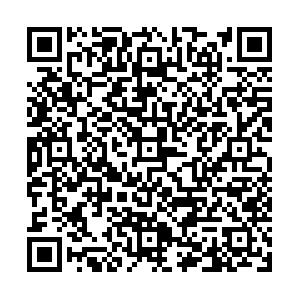Clinical effect and neuroendocrine effect of low-frequency repetitive transcranial stimulation on patients with primary insomnia
-
摘要:
目的 探究低频重复经颅刺激(repetitive transcranial magnetic stimulation, rTMS)对原发性失眠(Primary insomnia,PI)患者的临床效果及神经内分泌的影响,探究rTMS的作用机制,为临床推广应用提供依据。 方法 选取杭州市第七人民医院2019年7月—2020年7月收治的PI患者100例作为研究对象,按随机数字表法分成观察组(50例)及对照组(50例),对照组采用交变磁场疗法,观察组采用rTMS疗法,比较2组患者治疗前后匹茨堡睡眠质量量表(PSQI)评分,甘氨酸、谷氨酸及γ-氨基丁酸(GABA)水平。 结果 2组患者PSQI评分存在组间效应(P < 0.05),观察组治疗效果优于对照组,治疗总有效率高于观察组(96.00% vs. 74.00%,χ2=9.490, P=0.002);2组患者各神经递质水平存在组间效应(均P < 0.05),即观察组改善效果优于对照组,皆存在时间效应(P < 0.05),且分组与时间存在交互效应(P < 0.05),显示2组患者的各神经递质水平皆随时间有变化趋势,且时间因素作用效果观察组更显著。 结论 rTMS对于PI患者的治疗效果较为明显,可改善患者的睡眠状态同时调节神经内分泌水平,具有一定的临床推广应用价值。 -
关键词:
- 低频重复经颅刺激治疗 /
- 原发性失眠 /
- 神经内分泌 /
- 神经递质
Abstract:Objective To explore the clinical effects and neuroendocrine effects of low-frequency repetitive transcranial magnetic stimulation (rTMS) on patients with primary insomnia (PI) and the mechanism of rTMS for clinical application. Methods A total of 100 patients with PI admitted to our hospital from July 2019 to July 2020 were selected as the research objects and randomly divided into the observation group (50 cases) and control group (50 cases) using the random number table method. The control group was treated with alternating magnetic field therapy, and the observation group was treated with rTMS therapy. The PSQI scores, glycine, glutamate and GABA levels were compared between the two groups before and after treatment. Results The PSQI score of the two groups had an inter-group effect (P < 0.05). The treatment effect of the observation group was better than that of the control group, and the total effective rate of treatment was higher than that of the observation group (96.00% vs. 74.00%; χ2=9.490, P=0.002). An inter-group effect on neurotransmitter levels was observed (all P < 0.05), the improvement effect of the observation group was better than that of the control group. In addition, a time effect (P < 0.05) and an interaction effect between grouping and time (P < 0.05) were observed between the two groups. The levels of each neurotransmitter of the patients could change over time, and the effect of the time factor was more significant in the observation group. Conclusion rTMS has evident therapeutic effects on patients with PI. Furthermore, improving the sleep state of patients can simultaneously regulate neuroendocrine levels, which has certain clinical application value. -
表 1 2组原发性失眠患者一般资料比较
组别 例数 年龄(x±s,岁) 性别[例(%)] 病程(x±s,月) 男性 女性 观察组 50 43.18±2.37 26(52.0) 24(48.0) 7.78±1.02 对照组 50 44.09±2.28 28(56.0) 22(44.0) 8.01±1.11 统计量 1.957a 0.161b 1. 079a P值 0.053 0.688 0.283 注:a为t值,b为χ2值。 表 2 2组原发性失眠患者治疗前后PSQI评分比较(x±s,分)
组别 例数 治疗前 治疗后 观察组 50 16.15±1.53 10.03±2.16a 对照组 50 16.29±1.65 15.01±1.58a t值 0.440 13.158 P值 0.661 < 0.001 注:与同组治疗前比较,aP < 0.05。 表 3 2组原发性失眠患者治疗前后神经内分泌指标水平比较(x±s)
组别 例数 GABA(ng/mL) 甘氨酸(nmol/L) 谷氨酸(nmol/L) 治疗前 治疗后 治疗前 治疗后 治疗前 治疗后 观察组 50 2.14±0.55 3.38±1.13 1.97±0.22 2.88±0.38 21.88±2.09 13.38±1.58 对照组 50 2.13±0.49 2.57±1.08 1.89±0.34 2.23±0.31 22.01±2.38 18.14±1.36 t值 0.096 3. 664 1.397 9.372 0.290 16.247 P值 0.924 < 0.001 0.166 < 0.001 0.772 < 0.001 表 4 2组原发性失眠患者治疗有效率比较[例(%)]
组别 例数 治愈 显效 有效 无效 总有效 观察组 50 18(36.00) 21(42.00) 9(18.00) 2(4.00) 48(96.00) 对照组 50 11(22.00) 14(28.00) 12(24.00) 13(26.00) 37(74.00) 注:2组总有效率比较,χ2=9.490, P=0.002。 -
[1] YIN X, GOU M, XU J, et al. Efficacy and safety of acupuncture treatment on primary insomnia: A randomized controlled trial[J]. Sleep Med, 2017, 37: 193-200. doi: 10.1016/j.sleep.2017.02.012 [2] 王晓娇, 申变红. 失眠认知行为疗法对酒依赖患者睡眠质量及情绪的影响[J]. 中华全科医学, 2020, 18(2): 318-321. https://www.cnki.com.cn/Article/CJFDTOTAL-SYQY202002042.htm [3] FENG F, ZHANG Y, HOU J, et al. Can music improve sleep quality in adults with primary insomnia? A systematic review and network meta-analysis[J]. Int J Nurs Stud, 2018, 77: 189-196. doi: 10.1016/j.ijnurstu.2017.10.011 [4] MCCLINTOCK S M, RETI I M, Carpenter L L, et al. Consensus recommendations for the clinical application of repetitive transcranial magnetic stimulation (rTMS) in the treatment of depression[J]. J Clin Psychiatry, 2018, 79(1): 16cs10905. DOI: 10.4088/JCP.16cs10905. [5] REN R, ZHANG J, ZHANG T, et al. Auriculotherapy for sleep quality in people with primary insomnia: A protocol for a systematic review and meta-analysis[J]. Medicine (Baltimore), 2019, 98(8): e14621. DOI: 10.1097/MD.0000000000014621. [6] SANDLUND C, HETTA J, NILSSON G H, et al. Improving insomnia in primary care patients: A randomized controlled trial of nurse-led group treatment[J]. Int J Nurs Stud, 2017, 72: 30-41. doi: 10.1016/j.ijnurstu.2017.03.007 [7] SUN Q, TAN L. Comparing primary insomnia to the insomnia occurring in major depression and general anxiety disorder[J]. Psychiatry Res, 2019, 282: 112514. DOI: 10.1016/j.psychres.2019.112514. [8] YANG C, GUO Z, PENG H, et al. Repetitive transcranial magnetic stimulation therapy for motor recovery in Parkinson's disease: A Meta-analysis[J]. Brain Behav, 2018, 8(11): e1132. DOI: 10.1002/brb3.1132. [9] HE Y, SUN N, WANG Z, et al. Effect of repetitive transcranial magnetic stimulation (rTMS) for insomnia: A protocol for a systematic review[J]. BMJ Open, 2019, 9(7): e29206. DOI: 10.1136/bmjopen-2019-029206. [10] KIM W J, ROSSELIN C, AMATYA B, et al. Repetitive transcranial magnetic stimulation for management of post-stroke impairments: An overview of systematic reviews[J]. J Rehabil Med, 2020, 52(2): jrm00015. DOI: 10.2340/16501977-2637. [11] 梅盛瑞, 许晴, 袁鹏, 等. 经颅磁刺激在脑卒中后痉挛中的临床应用进展[J]. 中华全科医学, 2020, 18(12): 2078-2081, 2098. https://www.cnki.com.cn/Article/CJFDTOTAL-SYQY202012028.htm [12] 冯杰. 双侧低频重复经颅磁刺激对原发性失眠患者血清γ-氨基丁酸及脑源性神经生长因子的影响[D]. 苏州: 苏州大学, 2018. [13] KIEBS M, HURLEMANN R, MUTZ J. Repetitive transcranial magnetic stimulation in non-treatment-resistant depression[J]. Br J Psychiatry, 2019, 215(2): 445-446. doi: 10.1192/bjp.2019.75 [14] SONG P, LIN H, LI S, et al. Repetitive transcranial magnetic stimulation (rTMS) modulates time-varying electroencephalography (EEG) network in primary insomnia patients: A TMS-EEG study[J]. Sleep Med, 2019, 56: 157-163. doi: 10.1016/j.sleep.2019.01.007 [15] NARDONE R, SEBASTIANELLI L, VERSACE V, et al. Effects of repetitive transcranial magnetic stimulation in subjects with sleep disorders[J]. Sleep Med, 2020, 71: 113-121. doi: 10.1016/j.sleep.2020.01.028 [16] 陶晟, 吴艳春, 方洁. 低频重复经颅磁刺激对原发性失眠的疗效及神经内分泌的影响[J]. 国际精神病学杂志, 2020, 47(4): 730-732. https://www.cnki.com.cn/Article/CJFDTOTAL-GWYJ202004025.htm -

 点击查看大图
点击查看大图
计量
- 文章访问数: 322
- HTML全文浏览量: 141
- PDF下载量: 10
- 被引次数: 0



 下载:
下载: 